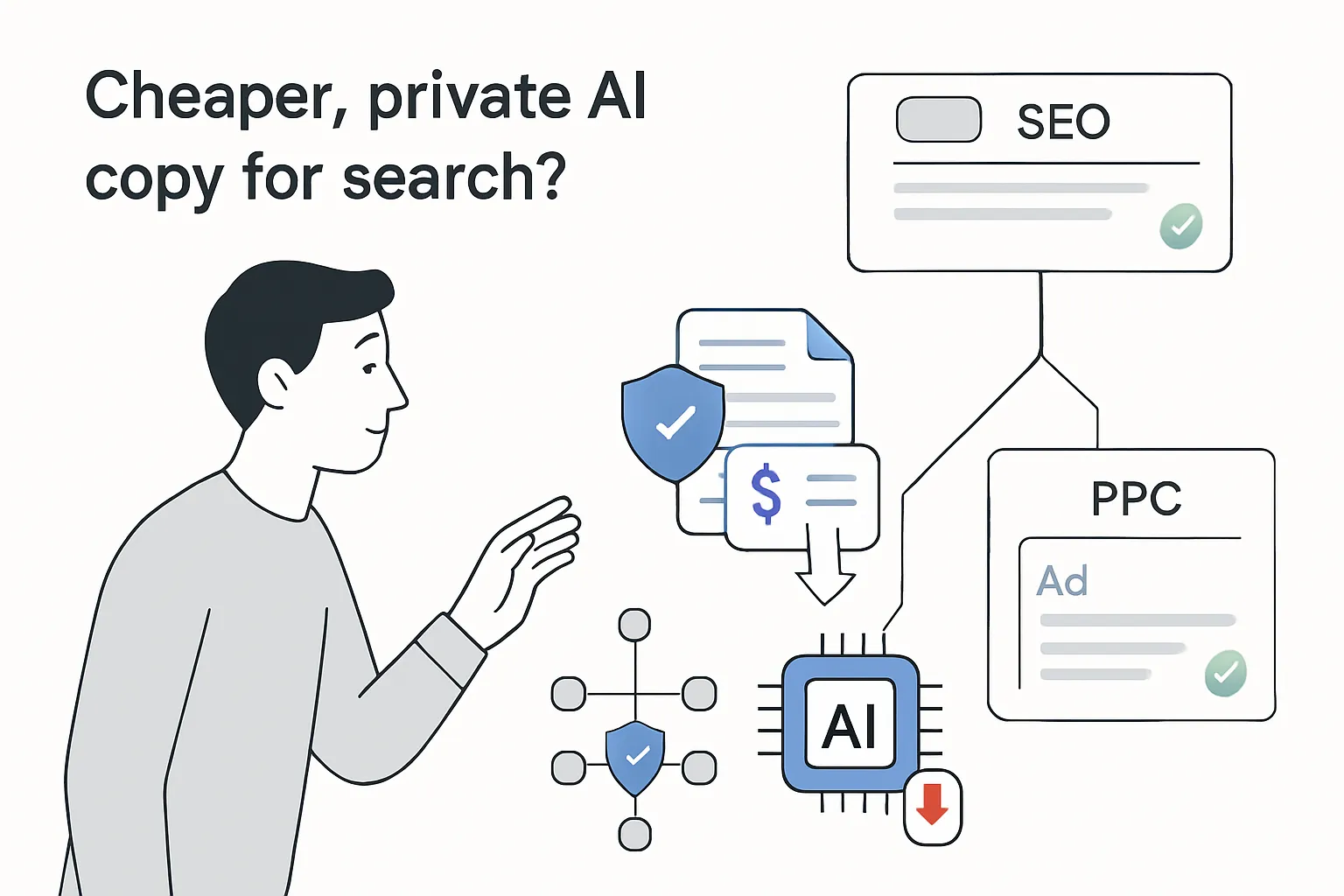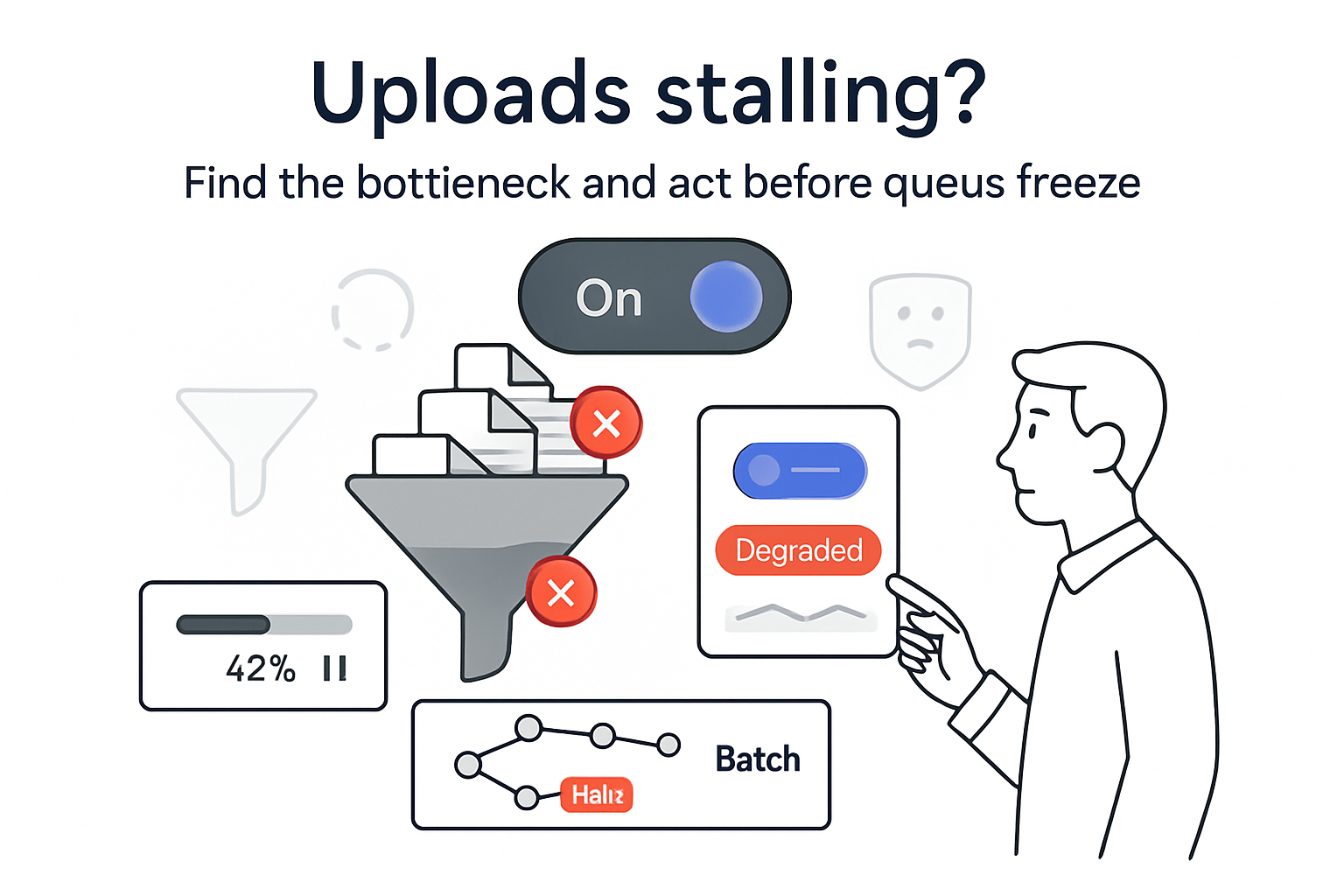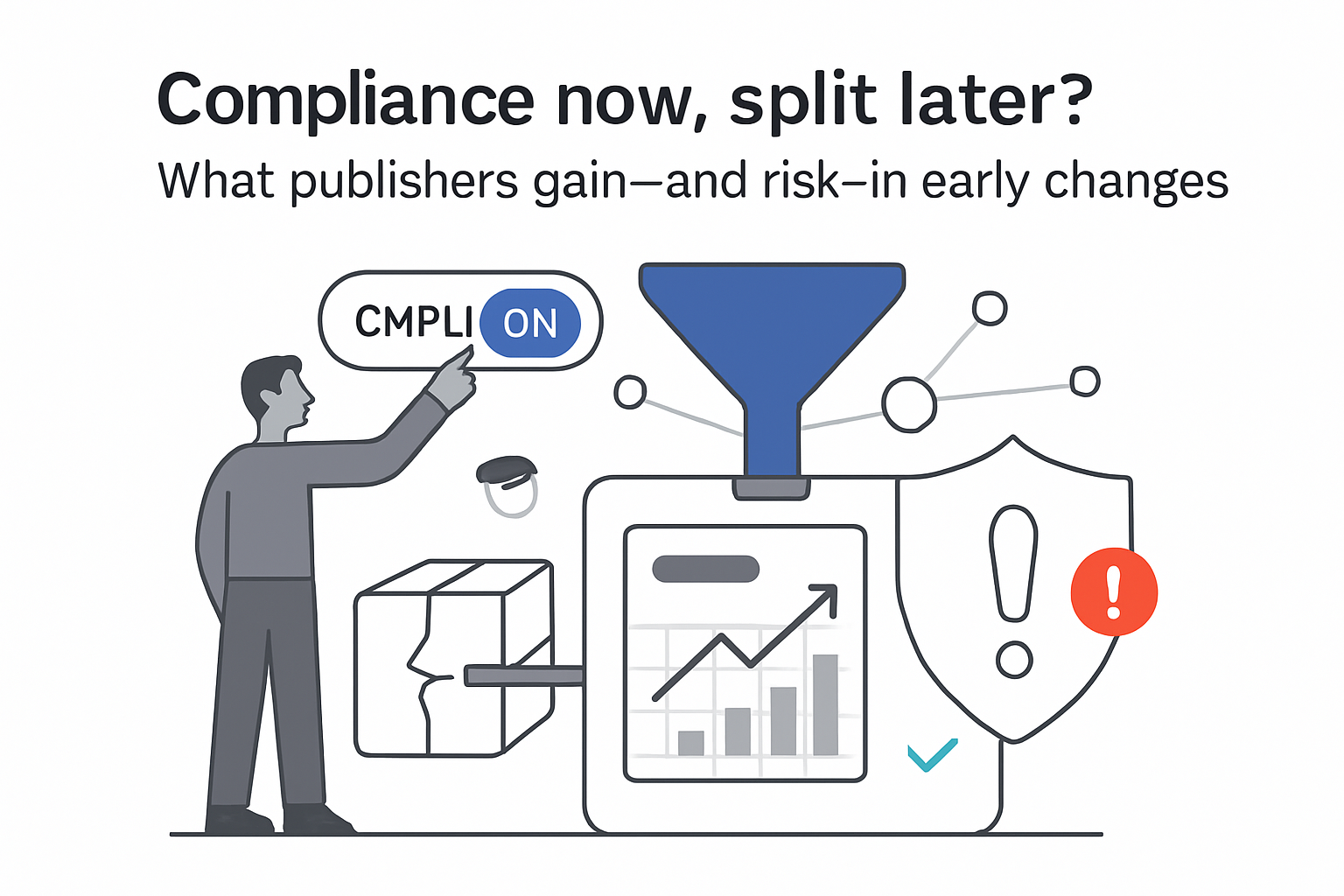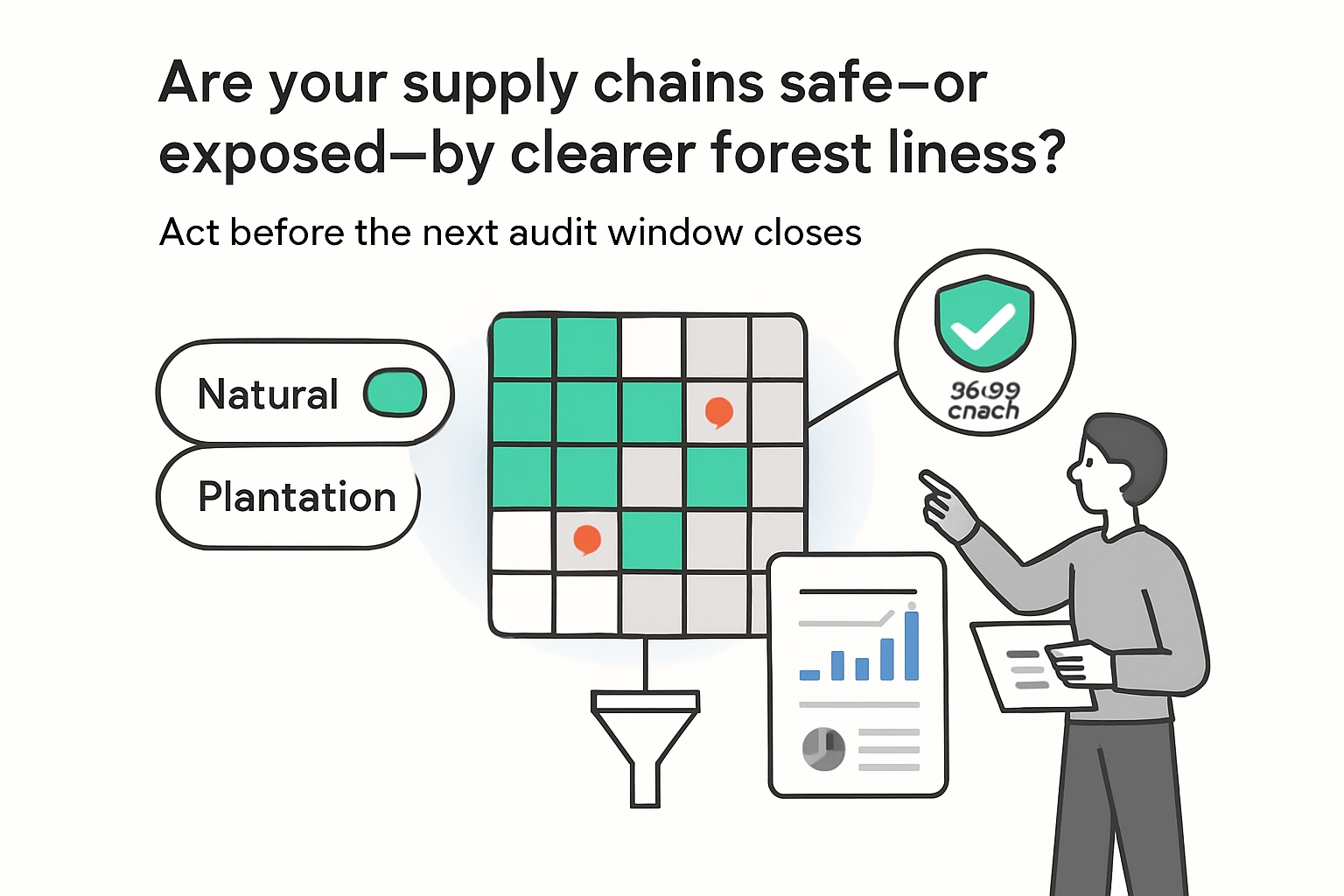Google's CTCL proposes a cheaper path to privacy-safe text synthesis. The practical question for marketers: if topic-conditioned, differentially private generators can mimic private corpora with a 140M-parameter model, what changes for SEO and PPC teams' data strategy, tool stack, and costs?
Privacy-preserving synthetic data (CTCL)
CTCL is a two-part system: a universal topic model (CTCL-Topic) built on public data and a small conditional generator (CTCL-Generator, 140M parameters) trained to produce documents from keyword prompts. Teams learn a DP topic histogram from private text and DP-fine-tune the generator on keyword-document pairs. They can then sample unlimited synthetic text proportional to the DP topic distribution. Reported results show stronger downstream accuracy than prior DP synthesis approaches, especially under tighter privacy settings (lower ε), compared with baselines such as Aug-PE and Pre-Text.
Key takeaways
- Cost structure shifts from billion-parameter DP LLMs to a 140M model - an order-of-magnitude smaller training footprint. So what: more teams can synthesize privacy-safe query, chat, and review text in-house rather than rely on costly API fine-tuning or data brokers, per the paper and comparisons to Aug-PE and Pre-Text.
- Unlimited sampling at a fixed privacy budget via DP post-processing. So what: you can correct class imbalance without spending additional privacy budget - useful for PPC negatives, brand-safety classes, and SEO intent taxonomies. See the post-processing property of DP.
- Topic-conditioned generation matches your private topic mix. So what: better coverage of long-tail queries and support dialogs than prompt-only methods, which often miss minority topics, per the paper.
- Gains are strongest when privacy is tight (lower ε) and tasks need fine-grained text. So what: regulated verticals like health and finance stand to benefit most; expect higher utility than prompt-only synthesis under strict privacy requirements, per the paper.
- Dependency on LLM APIs can drop. So what: lower variable token costs and fewer policy constraints from third-party providers, with more control over data residency and vendor risk, per the paper and comparisons to Pre-Text.
Situation snapshot
- Trigger: Google Research published CTCL, a DP text synthesis framework using a 140M-parameter conditional generator and a public-data topic model, evaluated on generative and classification tasks including PubMed, Chatbot Arena, Multi-Session Chat, and OpenReview. See the paper and venue listing at ICML 2025.
- Undisputed facts:
- CTCL-Topic: approximately 1K topics from Wikipedia; 10 keywords per topic via a BERTopic-style approach.
- CTCL-Generator: a BART-base-sized model (about 140M parameters) continually trained on 430M description-document pairs sourced from SlimPajama and described with Gemma-2-2B, then DP fine-tuned per private domain.
- Unlimited synthetic sampling does not add privacy cost due to the DP post-processing property (reference).
- Reported results favor CTCL over Aug-PE and other DP-LLM baselines, especially at lower ε. Ablations show large loss reductions from keyword conditioning and public pre-training, per the paper.
Breakdown and mechanics
- Core pipeline:
- Public pre-build: assemble CTCL-Topic using Wikipedia embeddings and clustering into roughly 1K topics with 10 keywords each via BERTopic. Pre-train CTCL-Generator on public description-document pairs from SlimPajama with descriptions generated by Gemma-2-2B.
- Learn private domain: compute a DP topic histogram across the private corpus, map each private document to topic keywords, and DP-fine-tune the generator on keyword-document pairs.
- Generate: sample per DP histogram proportions and prompt the DP-tuned generator with topic keywords to produce any volume of synthetic text without extra privacy spend, leveraging the DP post-processing property (reference).
Why it can outperform prompt-only methods
- Conditioning adds structure: Topic keywords anchor the generator to private-domain semantics, and the DP histogram enforces a realistic topic mix. Result: lower mode collapse on minority intents, higher coverage, and better downstream accuracy, particularly at low ε.
- Compute incentives: fine-tuning a 140M model is roughly 7 to 50 times smaller than tuning 1 to 7B-parameter LLMs. Training cost scales with parameter count and tokens. Assumption: DP-SGD adds 1.5 to 3x overhead vs non-DP SGD, but the smaller base still yields material savings.
Trade-offs
- Topic granularity limits personalization. CTCL matches distributions at the topic level, not the user level. Expect stronger results on category and intent tasks than deeply personalized generation.
- Public topic modeling may miss niche domain topics. Accuracy depends on how well public clusters approximate private semantics.
Impact assessment
Paid Search
- Direction: Positive for query mining, negative keyword classification, and long-tail simulation. Use synthetic queries per topic to expand or validate match coverage and rebalance rare intents without extra privacy spend.
- Effect size: Medium near term. Classifiers trained on CTCL data should reduce wasted spend from mismatched queries, with the largest gains in regulated verticals.
- Beneficiaries: In-house SEM teams with chat logs and search terms. Potential losers: API-only DP synthesis vendors reliant on costly large-LLM fine-tuning.
- Actions and monitoring: Set ε targets with Legal. Compare precision and recall of intent or negative classifiers trained on CTCL vs prompt-only synthetic baselines at equal token budgets.
Organic Search (SEO research, not mass content publishing)
- Direction: Positive for intent taxonomies, entity discovery, and snippet or FAQ prototyping. Neutral to negative for directly publishing synthetic content due to quality and policy risks.
- Effect size: Medium. Expect better coverage of long-tail intents and FAQ variants. Use synthetic data to train internal classifiers, not as crawlable pages.
- Actions and monitoring: Keep synthetic outputs noindex. Evaluate how topic-weighted synthetic queries shift keyword grouping. Watch for overlap or drift against real GSC queries.
Creative and Messaging
- Direction: Positive for ad copy exploration under privacy limits. CTCL can produce on-brand variants by topic without exposing raw logs.
- Effect size: Small to medium. Human review is still required; synthetic data widens the ideation set and rebalances low-volume segments.
- Actions and monitoring: Human-in-the-loop review. Measure lift from adding CTCL-augmented examples to creative ranking models.
Data, Operations, and Compliance
- Direction: Strong positive on cost and governance. Smaller models reduce GPU requirements, and DP post-processing allows larger synthetic corpora for model training and vendor sharing.
- Effect size: Medium to large. Parameter count drops from billions to 140M, and sampling at fixed ε enables bigger training sets without extra privacy accounting.
- Actions and monitoring: Select ε jointly with counsel. Document DP accounting. Validate domain drift between public topics and private data. Track open-source availability and reproducibility.
Scenarios and probabilities
- Base case (Likely): Open implementations emerge, and teams adopt CTCL-like pipelines for intent and brand-safety classification and query simulation in regulated verticals. Impact: 10x to 50x lower model size than billion-parameter DP LLMs enables practical on-prem pilots. Utility exceeds prompt-only under tight ε, per the paper.
- Upside (Possible): Ad and analytics platforms as well as clean rooms expose CTCL-style topic histograms and DP generators as managed services. Impact: faster onboarding and a lower legal review footprint for text sharing.
- Downside (Edge): Reproducibility lags, topic model mismatch hurts niche domains, or acceptable ε settings produce weak utility. Result: teams revert to non-DP workflows or prompt-only synthesis with careful redaction.
Risks, unknowns, limitations
- Missing numbers: the blog-level summaries do not specify ε values, dataset sizes, or absolute accuracy deltas. This limits precise ROI modeling.
- Domain coverage: Wikipedia-based clustering may under-represent specialized jargon. Mismatch can depress utility for narrow B2B domains.
- Legal interpretation: while DP is widely accepted, whether DP-synthetic text is non-personal data can vary by jurisdiction and implementation. Confirm with counsel.
- Engineering complexity: DP-SGD requires per-example gradients and careful accounting. Smaller teams may prefer managed offerings.
- SEO policy risk: publishing synthetic text remains risky. Use it for internal modeling and research.
- Falsifiers: if independent evaluations show minimal gains over Aug-PE or if large-LLM API costs drop sharply, CTCL's cost and utility advantage could erode.
Sources
- Paper - Tan et al., 2025, arXiv.
- ICML 2025 - publication venue listing.
- Aug-PE - Data Synthesis with Augmented Private Evolution, 2024.
- Pre-Text - Privacy-Preserving Synthetic Text via LLM APIs, 2024.
- Wikipedia - source corpus for CTCL-Topic.
- BERTopic - topic modeling approach referenced for CTCL-Topic.
- SlimPajama - public corpus used for description-document pairs.
- Gemma-2-2B - model used to create document descriptions.
- BART-base - base 140M-parameter architecture for CTCL-Generator.
- post-processing property of DP - Dwork and Roth.
- PubMed - generative task evaluation dataset.
- Chatbot Arena - human-to-machine interaction dataset.
- Multi-Session Chat - human-to-human dialogue dataset.
- OpenReview - classification dataset source.
- synthetic - related DP fine-tuning work used for comparison.
- data - related DP text generation baseline.
- post-generation resampling - technique cited for baseline post-processing.








.svg)